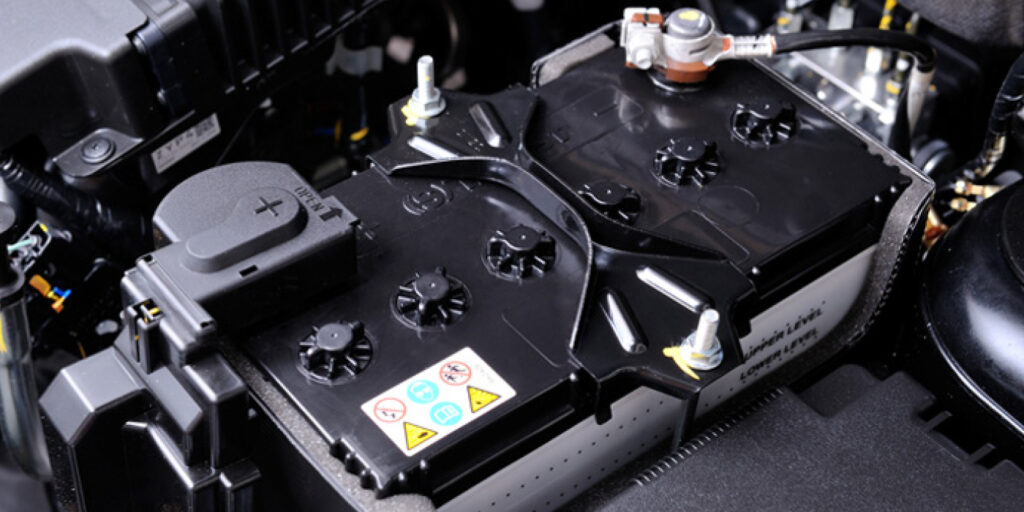 There’s a boss in every family, and sometimes you might think it’s you, but your spouse may have a different opinion. For example, there have been countless times I’ve had a car in the shop where a wife or husband has dropped the car off and the repair is done, paid for, and sent on its way, only to have the other spouse call and give me an earful because they weren’t told what had transpired. (As if that’s my fault!)
There’s a boss in every family, and sometimes you might think it’s you, but your spouse may have a different opinion. For example, there have been countless times I’ve had a car in the shop where a wife or husband has dropped the car off and the repair is done, paid for, and sent on its way, only to have the other spouse call and give me an earful because they weren’t told what had transpired. (As if that’s my fault!)
Whether it’s because of the cost, the time it took, the work that was done, or the fact they weren’t informed, somehow I’ll be the person blamed for all of their misfortunes.
On one particular occasion, I had a car in for restoration. These “project” cars arrive in all kinds of various conditions. Some are a complete car and the owner has a clear idea what they want done, while others literally come in baskets. This particular job could definitely be categorized as a “basket case.” The car had been taken down to the last nut and bolt nearly five years earlier, and by the time it made it to my shop, nothing but the steering wheel was in place. There were no doors, glass, deck lid, hood, interior, dash, seats or an engine to be found.
“I need an estimate on what it would take to rewire this car,” the owner tells me.
All I had to go on was the year, the make and the condition to evaluate the potential cost. The car was an older VW Super Beetle.
“I see you’ve got an aftermarket harness in this box, but it’s not complete. Do you have any of the other harness sections for it?” I asked.
“They don’t make a harness for it, this is all they offer,” my new customer told me.
“Well, I think there are some better choices than this aftermarket harness you’ve brought. This is a harness for a dune buggy, not for a streetcar. A lot of things are omitted on them that you’ll need for a street-driven car, such as turn signals, horn, etc.”
I gave him a price based on reusing the original harnesses that were bundled up in another box. When I pulled them out of the box, I was in for a shock. They were all cut into several small pieces rather than in the usual sections. I quoted for installing a factory harness, not building one!
In the meantime, we went up to the front desk to fill out some paperwork, and I went online and did some of my own searching for a replacement harness. It didn’t take but a few clicks before I had a “useable” harness that would work with only a little adaptation to the Super Beetle fuse box and ignition. “Once I see this kit, I can give you a better idea of final cost,” I told him.
A week later, he was back with the aftermarket harness. The harness wasn’t a perfect match as I mentioned earlier, but it was useable with a few modifications. No biggie, it would just involve a lot more time compared with putting a good factory original harness back in.
I gave him an updated estimate for the work, which, in turn, prompted him to give me the go-ahead to get started. Over the next few days, I had already started putting in the front harness and part of the interior wiring. And, then, he showed up with his wife and I knew something was up.
“I think I’m going to take the car. Your price is too high,” he told me.
At that point, the wife jumped into the conversation. “My husband told me you raised the price on him once we got you the harness you wanted,” she told me.
“Yes, the original estimate was to put a ‘factory’ harness in. Now I’m putting in an aftermarket harness that I have to make do with. Rather than trying to find a perfect fit, your husband said to go with this. So I did, and I’ve already started on it.”
That’s when the husband jumped back into the mix with his two cents, remarking how his five-year-long attempt at doing it was only a minor setback in the restoration.
Then, his wife leaned over the counter to me, “Here’s my personal cell number and my name. From now on, please call me directly. This has taken far too long to get done, and I want my car back together.”
She snapped at her arrogant husband, “Did you bring him any of the lights, dash gauges or any of the other electrical stuff so he can see if they work? NO? Well, you’re just an idiot!” (I could tell me and the “Mrs.” were going to get along just fine.) Completely ignoring her husband, she pulled out a pad and pen and starting jotting down notes on what components I needed, and told me she would have them over to the shop that afternoon and out of her house for good.
After all was said and done, they ended up with a pretty cool restored bug out of the deal, and I got one happy customer. When dealing with repairs as complicated as this one, it pays to deal with the boss. And, in this case, it wasn’t the hubby.













